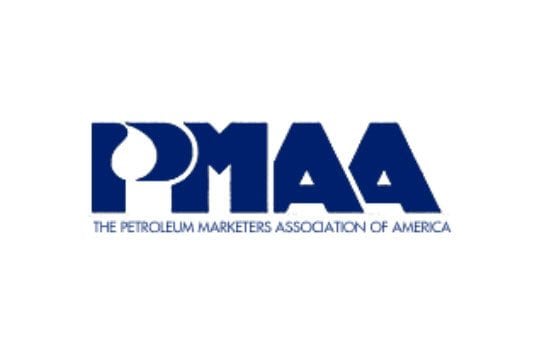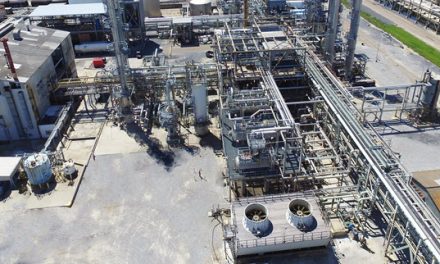As noted in this article HERE, PMAA was exploring some final tweaks to the recently finalized UST rule. As part of that, PMAA was seeking specific clarification from EPA on a number of provisions. Offered below, PMAA Counsel Mark S. Morgan an update on those clarifications:
EPA RESPONSE TO PMAA REQUEST FOR CLARIFICATION OF CERTAIN PROVISIONS IN NEW UST RULE:
The following Q&A is the result of PMAA’s request for clarification by the EPA Office of Underground Storage Tanks on key provisions in the UST rule. These clarifications should be passed along to state UST authorities as a guide when implementing state rules. These clarifications generally make compliance less burdensome for tank owners.
1. Overfill Protection: Will EPA provide a definition of “inspect” with respect to overfill protection equipment? Are tank owners required to pull the automatic shut off device out during this process?
EPA Answer: EPA did not specifically define the term inspect. Rather, EPA specified in the 2015 UST regulation what to inspect for. 280.35(a)(2) indicates the inspection must ensure overfill prevention equipment is set to activate at the correct level and will activate when regulated substance reaches that level. The 2015 UST regulation does not require the automatic shutoff device to be removed during the inspection. However, EPA is not aware of any way to properly inspect the shutoff device to ensure it is set at the correct level without removing it.
2. Spill Bucket Testing: In the final rule EPA addressed PMAA’s concern over the disposal cost of water/liquid used for spill bucket testing by indicating that vendors typically re-use this potentially contaminated liquid from site to site, thus reducing disposal costs by spreading out over multiple retailers. Does the EPA intend to send a written guidance document to state UST regulators explaining that vendors are permitted to re-use testing liquid and transport it between sites in this manner?
EPA Answer: The 2015 UST regulation does not prohibit vendors from reusing test liquids and transporting the liquid to different sites. As you indicate, the preamble describes that some vendors already do this. EPA will ensure states are aware that the UST regulation does not prohibit vendors from transporting and reusing test liquids.
3. Spill Bucket Testing: Are tank owners required to test double wall spill buckets even if the interstice is found to be liquid free(dry)?
EPA Answer: Testing is not required if the integrity of both walls of a double-walled spill bucket is periodically monitored. However, owners and operators must test double-walled spill buckets only if they choose not to periodically monitor the integrity of both walls (see 280.35(a)(1)(i)). The frequency of periodic monitoring in the 2015 UST regulation for spill buckets is typically 30 days – the frequency required in the walkthrough inspection.
4. Under Dispenser Secondary Containment Testing: Are tank owners required to test all UDC or only UDC used for both secondary containment AND interstitial monitoring of pipes.
EPA Answer: Periodic testing of containment sumps (including UDC) is required only when the containment sump is used for secondary containment of the piping and when interstitial monitoring is used for release detection of that piping. The location of the interstitial monitoring device is not a factor in determining whether periodic testing is required. For example, an owner/operator has UDC that is used as the secondary containment for piping where regulated substances can drain to another sump that is monitored with a sensor. In this case UDC must meet the periodic testing requirement because it is used as part of secondary containment and interstitial monitoring of the piping.
5. Under Dispenser Containment: Are tank owners required to install UDC if only several components of the dispenser system are replaced, but not the entire dispenser system (for example a shear valve but not flexible connectors)? Or, are tank owners required to install UDC if any single component of the dispenser system is replaced?
EPA Answer: The 2015 UST regulation at 280.20(f) indicates that a dispenser system is considered new when both the dispenser and the equipment needed to connect the dispenser to the underground storage tank system are installed. That equipment may include check valves, shear valves, unburied risers or flexible connectors, or other transitional components that connect the dispenser to the underground piping. This means that the UDC requirement is not triggered until the dispenser and everything between the dispenser and the underground piping is installed. Please note that most states have already implemented their own requirements for secondary containment and UDC. The 2015 UST regulation will primarily apply to owners and operators of UST systems in Indian country.
6. Sump Inspection: If a tank owner uses SIR, what must tank owners inspect on a monthly basis? How does ATG and SIR impact inspection sump inspection? If using ATG and SIR, would sump inspection be required more often than once per year?
EPA Answer: For the release detection part of the walkthrough inspection described in 280.36, owners and operators using SIR must ensure their SIR records are reviewed and current. In addition, if they use any electronic equipment (for example an ATG if SIR data is gathered from the ATG), they must look at it to make sure it is on and operating normally. The annual containment sump inspection part of the walk through inspection is required for all containment sumps and is independent of the release detection method used. The 2015 UST regulation does not require containment sump inspections more often than annually.
7. Sump Inspection: Can tank owners perform an annual precision primary line test (as is the case with single wall piping systems) on double walled systems in lieu of monthly sump inspection if installed before secondary containment became a regulatory requirement?
EPA Answer: The walkthrough inspection only requires annual inspections of containment sumps. There is no monthly containment sump inspection requirement in the walkthrough inspection. The annual containment sump inspection must be conducted no matter what method of release detection is used. Owners and operators of UST systems installed on or before April 11, 2016 may choose to perform an annual line tightness test (or any other release detection method allowed in the UST regulation) to meet the piping release detection requirement. All UST systems installed after April 11, 2016 must use interstitial monitoring for release detection. Note that in all cases, pressurized piping must also have an automatic line leak detector.
8. Sump and Spill Bucket Testing Pass Fail Criteria: EPA mentions the criteria for a pass/fail determination for sump and Spill bucket testing set forth in PEI RP1200. An eighth of inch change in liquid level over one hour is specified for both sumps and spill buckets. Considering spill buckets normally are sized between 5 and 15 gallons, and that containment sumps normally hold 200-300+ gallons of liquid, and that the surface area of any test liquid that is exposed to the ambient air is vastly different for sumps and spill buckets, Is EPA aware of the scientific basis for the criteria?
EPA Answer: EPA understands the standard provides a single pass/fail criteria to indicate a tight or non-tight containment area, albeit at different leak rates depending on the size and shape of the containment. In addition, EPA understands the one eighth inch criteria represents current testing practices when using hydrostatic testing. We believe PEI RP1200 is based on common industry practice. For more information about the recommended practice, please contact the Petroleum Equipment Institute.
9. Liquid Tight Sumps: EPA states that both new and existing containment sumps used for intestinal [sic] monitoring must be “liquid tight” Does EPA require that sumps and under dispenser containment are liquid tight on top, whether they have a lid or cover or not?
EPA Answer: For UDC, the 2015 UST regulation at 280.20(f)(2) indicates that UDC must be liquid tight on its sides, bottom, and at any penetrations. It does not indicate that UDC must be liquid tight on top. For other containment sumps, 280.35(a)(1)(ii) indicates that the containment sump must be tested once every three years to ensure the equipment is liquid tight. There are no further details in the UST regulation for containment sump testing. However, we know that using a liquid to test a containment sump does not test the top or lid of the containment sump. In addition, in our observation of vacuum testing demonstrations, we note that the lids are removed for this testing. Based on this, EPA does not believe containment sumps must be liquid tight on top, whether or not they have a lid or cover.
10. Electronic Monitoring of Sumps: The EPA allows the installation of electronic monitoring of sumps that cannot be accessed for inspection. If a sump has electronic monitoring, do inspections and testing need to be performed?
EPA Answer: EPA assumes PMAA is referring to the provision for periodic monitoring of leaks in UDC at 280.20(f)(2). This provision only applies to UDC where access to the components in the UDC is not possible. This provision exists because some fire code officials interpret the fire codes to require the sump be filled with stone or dirt for fire safety. In this case, components in the containment sump are not accessible, so EPA requires containment sumps where components cannot be accessed for inspection be periodically monitored for leaks from the dispenser system.
Annual walkthrough inspections must be conducted on all containment sumps, independent of whether a sump has electronic monitoring (though it is possible that the owner/operator may not see anything if, for example, the sump is filled with dirt or stone). Three year testing of containment sumps is also required even if a sump has electronic monitoring except when the containment sump is double-walled and the integrity of both walls is periodically monitored.









